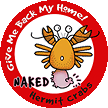Last Saturday, the husband and I had the opportunity to ride the very low tides of Kranji Reservoir with a PUB officer Mr Osman and Dr Yam Tim Wing of Nparks to do a survey of herons as part of the nationwide survey Heron Watch 2014.

Based on my dim understanding of a presentation, Heronwatch was first done in 2003 by Luan Keng and volunteers where data of herons were collected across the island. Herons are a good indicator of how our environment is doing as they are a species at the top of the food chain. (They are also so big you can spot them easily!) This means if you don't find them or find less of them, either there is nothing to eat, or no home to stay or make babies! In 2013, a decade later, round two was done to compare how things have changed. Herons are mostly found in coastal, mangroves, and freshwater areas or in fields and sometimes even surprisingly near urban areas. Instead of waiting another ten years, Nparks has decided it is important to collect data more frequently, I suppose so that we can better monitor the health of these ecosystems. So Heronwatch 2014 was organised!
We are no birding experts but the husband and I were quite enamoured by the presentation by Luan Keng that we accidentally stumbled upon at Sungei Buloh anniversary celebrations in Dec 2013 and the call for volunteers from Sharon (Nparks) that we decided to sign ourselves up as volunteers! The promise of being able to contribute while having a picnic with family at a venue close to home was enticing! We live really near to Jurong Lake where herons and egrets were known to roost and nest.
Little did we know we would end up having an adventure in the middle of Kranji Reservoir! At one point we were even caught in approaching thunderstorm with strong wind and the boat was struggling to run away fast enough to keep us dry while we get distracted by raptors fishing and being chased by smaller birds from their nest!

photo by Dr Yam
All this aside, we were fortunate for the amazing photography of Dr Yam which helped us zoom in really close to identify the shots of blur that flew past us, Mr Osman who navigated us expertly around and enthusiastically pointed out birds to us, the NSS birds of singapore iphone app which helped us when we were scratching our heads and Andy D who recommended us where to buy a binoculars prior to Heronwatch so we didn't end up looking at tiny dots in the sky with our naked eyes!

Little Egret - Photo by Dr Yam
The spousal unit and I are now amateur experts of recognising grey herons from purple herons and aficionados of the grace if the little egret and its cute yellow toes. We were also amazed at the close encounters with black-crowned night herons and its juveniles in a truly WILD river safari experience. fortunately no crocodiles decided to be friendly during our boat ride but I am afraid it is probably due to the noise from the boat and its excitable passengers that had scared away the birds and other wildlife! I only lament that we did not see any bitterns at all despite the abundance of reeds but we saw many shadows under the trees and in the reeds but couldn't identify what they were! I also realise I am an expert of identifying rocks and sign posts as herons!

Spot the ominous neon pink eggs of the invasive apple snail
The sad part is that I spotted the ominous neon pink eggs of the invasive apple snails along the banks of the Kranji Reservoir. According to Ivan Kwan, Kranji is still one of the last places you can find our native apple snails but the presence of the alien invaders means they may soon be out-competed. Fingers crossed, hopefully not. I read that the invasive golden apple snails are reared in the aquarium trade, as well as for food as they are edible. Somehow they managed to escape into our natural habitats and are now more common than our native fellas.

Black-crowned night heron - Photo by Dr Yam
Well it is not all bad news because Xinli from Nparks tells us that they had not spotted black crowned night herons at Kranji Reservoir previously! And the fact we saw juvenile means they may be nesting! Exciting news for me. I am glad our little contribution through citizen science may help the real scientist to better understand how well our ecosystems are doing.
Most of all, I am glad to have had the privilege of enjoying the beauty of Kranji from the waters. The breathtaking view has inspired me to yearn for a repeat experience! Kayaking in Kranji Reservoir anyone? :)

Thursday, April 10, 2014
Heron Watch 2014
Posted by
Monkey
at
Thursday, April 10, 2014
![]()

 I can be contacted at
I can be contacted at 







No comments:
Post a Comment